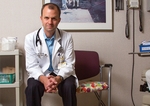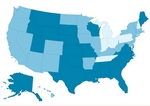business
Physician practices have "multiplier effect" on local economies
■ An Oregon study suggests that government officials should note doctors' ability to attract money and jobs to a community when investing tax dollars.
By Victoria Stagg Elliott — Posted Sept. 27, 2010
- WITH THIS STORY:
- » External links
- » Related content
Physician offices have a financial ripple effect that draws money and jobs into a community, so government officials should take this into account when deciding how to invest tax money, according to a study issued Sept. 8 by the Oregon Healthcare Workforce Institute.
"It is essential to understand the multiplier effect physicians' practices have on our local and regional economies, in addition to the care they provide our citizens," said Jo Isgrigg, PhD, lead author of the study and executive director of the institute. "Without them, we lose economic activity that contributes to the overall financial health of our communities."
The study, The Economic Contributions of Oregon's Physician Practices, was carried out in partnership with Oregon Health & Science University, the state's Area Health Education Center and the Oregon Medical Assn. Its purpose is to encourage the state to restore funding to a program that repays medical student loans and try to attract physicians to Oregon.
In the last few years, the American Hospital Assn., the American Academy of Family Physicians and state medical societies have issued similar studies to show their economic value to lawmakers and others.
"Lawmakers and policymakers have to consider a lot of options when it comes to addressing our state's health care work-force shortage -- especially in these troubled economic times," said John Moorhead, MD, chair of OMA's Access and Workforce Committee.
Researchers used statistical modeling to determine that each physician directly or indirectly supports 12 to 48 positions. Physician practices support about 11% of the state's labor market, or 242,084 jobs. The effect is more significant in rural than urban communities.
"The timber industry is so unbelievably depressed. Health care is nearly the only industry that's hiring," said Lisa Dodson, MD, one of the study's authors and director of the state's Area Health Education Center.
These numbers include those who would be directly employed by a practice and the staff a hospital or pharmacy may add when a physician joins a community. They do not include jobs supported by doctors and other staffers spending their salaries.
The study found that physician offices added $17.1 billion to the state's gross domestic product. Physician-related employment generated nearly $1.5 billion in taxes to state and local governments.
Reports issued by other medical societies on the economic impact of physicians found similar results. For example, a report released March 31, 2009, by the Florida Medical Assn. found that each physician supported an average of 19 jobs and $2.3 million in economic activity.












